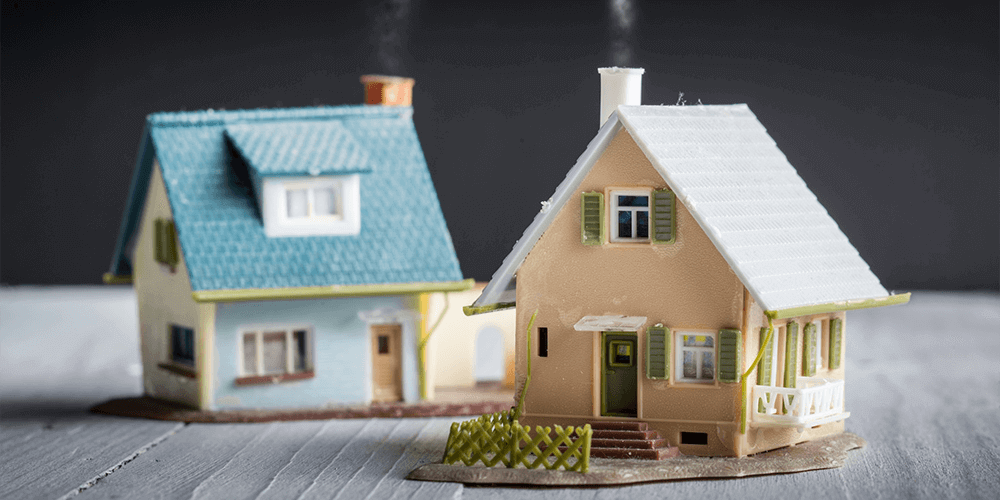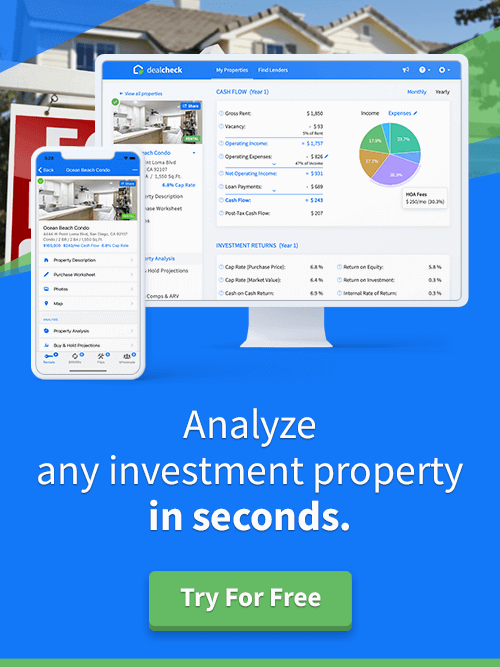The following is a post written by Luke Babich, a guest contributor to the DealCheck blog.
Purchasing a second home is a great way to start investing in real estate. Whether you’re using it as a vacation home, a seasonal Airbnb, or just a property to flip, a second home can be a springboard to build generational wealth through real estate.
But getting that second home can be a hurdle. Not everyone has the cash to purchase it outright, and some buyers won’t qualify for conventional financing. Fortunately, you have options. Here are nine alternative financing strategies for buying a second home.
1. Tap Into Your Current Home Equity
Utilizing a home equity line of credit is one way investors can purchase a second home. If you have lived in your primary residence for a long time and have substantial equity, this can be a great way to get started.
A home equity line of credit comes with a few distinct advantages. You can use it to purchase a second home anywhere, even out of state. In some cases, interest rates are also lower than a conventional mortgage, so you’ll pay less to access that equity.
Finally, the payment plan for a home equity line of credit can often be restructured so you have an interest-only period. If you plan on flipping that second home, this keeps your payment low during renovations, decreasing your carrying costs and increasing your profit.
2. Take Advantage of Seller Financing
When you don’t have a lot of equity in your primary home, ask about seller financing. Instead of heading to the bank for a mortgage, the seller will act as your lender and collect your monthly payments.
This process is often faster than traditional financing, and the terms and conditions vary wildly. The trade-off is that only a few sellers are willing to consider seller financing, and those who are may charge higher interest rates or only offer short-term loans.
3. Borrow Against Your 401(k)
Although most financial advisors would counsel against using your 401(k) for anything except an emergency, this could be an option when your credit score and home equity aren’t sufficient to secure any other type of financing.
Borrowing against your retirement is risky, though. There may also be tax implications that can be shocking when you get your bill in April. Make sure you understand the risks before you tap into this fund, and consult a qualified tax professional.
4. Partner With Friends and Family
Almost as risky as tapping into your retirement fund is teaming up with friends and family to purchase a second home together. This strategy spreads the financial burden so you won’t be stuck paying all the upfront expenses out of your own pocket, but it can cause disagreements to arise in otherwise healthy relationships.
Co-purchasing a house is a great strategy for investors who don’t have a lot of cash to contribute. They may be able to throw their skills into the hat instead. For example, an accredited investor could pay the down payment and secure the loan for the second home, while you take care of the renovations and manage the property.
No matter how you divide labor and expenses, it’s critical to have a legal agreement drawn up before entering into this kind of arrangement. This outlines the responsibilities and rights of everyone involved, with clear exit strategies when it’s time to sell.

5. Use a Private Mortgage
A private mortgage is a loan from an individual or a private institution. They may have more flexible qualifications for investors with less-than-perfect credit or large sums of debt. In addition, these loans are often faster to close, with flexible terms and repayment plans.
Although a private mortgage can make owning a second home a reality for people who may not otherwise qualify for a loan, this money comes with a big caveat. Interest rates for a private mortgage can be many percentage points higher than those for a conventional loan. Consider this type of alternative financing if you are planning to flip the house or if you want to refinance it immediately after purchase.
6. Lease With an Option to Buy
Leasing with an option to buy is a relatively low-risk proposition for first-time investors who need time to commit and get their finances in order before buying another property. With this type of funding, you agree to lease a property for a period of years before you buy. A portion of your monthly rent goes toward the down payment, and at the end of the term, you apply for financing to close the sale.
You’ll also get a chance to lock in the current interest rate and set the price of the home before buying. If the area in which you are leasing experiences a significant upward market shift, you’re building additional equity on top of what you pay each month.
7. Crowdfund Your Purchase
You can turn a small investment into a large second home through crowdfunding. If you’re familiar with Kickstarter or GoFundMe, you already know how it works. Real estate-specific platforms like RealtyMogul and Fundrise can help would-be investors get more bang for their buck by pooling their money together.
This might be your best funding strategy if you’re looking at a second home as an investment, not a potential vacation spot.
8. Do a Cash-Out Refinance
Cash-out refinancing lets you refinance the mortgage on your primary home for more than the original amount. Once the loan balance on the mortgage is paid, you can use the extra cash however you’d like.
This is a great way to access money to purchase a second home, but there are some drawbacks. You’ll pay closing costs on the refinance, which can eat away at the extra cash, and the interest rates and payback period are often less than favorable.
9. Use a Reverse Mortgage
If you are 62 or older, a reverse mortgage might be the move toward a second home. It allows you to borrow against the equity you have in your current home, with one major difference from a home equity line of credit. The loan balance is only due if you sell the home or upon your death.
There are other restrictions besides your age. If your spouse is under 62, he or she cannot be on the title. You must have at least 50% equity in your home, and you can’t take out a reverse mortgage on a second or vacation home. These are only some of the guidelines, and they can be difficult to qualify for. Still, it’s worth considering if you meet the basic criteria.
Using a Second Home to Start Investing
Buying a second home can be complicated, with unexpected costs and tax implications, so it’s best to talk to a financial advisor or real estate professional to see which option might work best for you.
At the same time, it can be a great strategy to jumpstart your real estate investing journey with less risk and more favorable financing terms than buying rental properties outright. Together with house hacking, buying a second home and later turning it into an investment property is a great way for many real estate investors to get started.

Luke Babich is a licensed real estate agent and is the co-founder of Clever Real Estate, a real estate education platform committed to helping home buyers, sellers and investors make smarter financial decisions.


